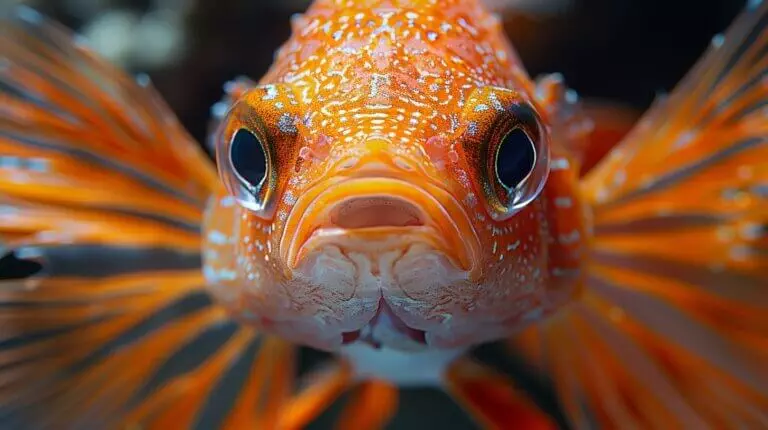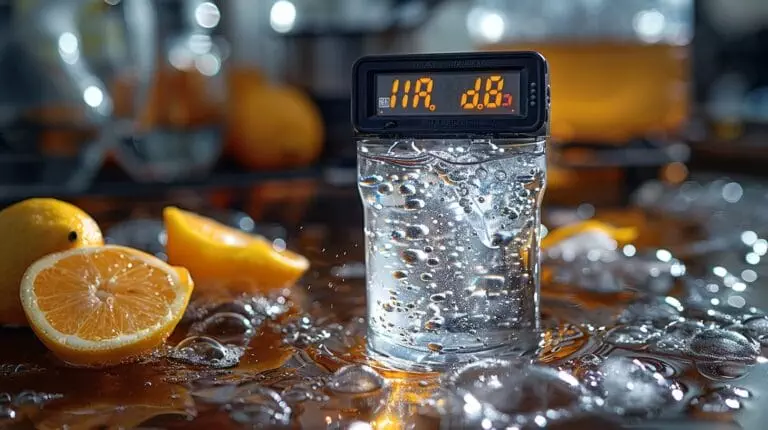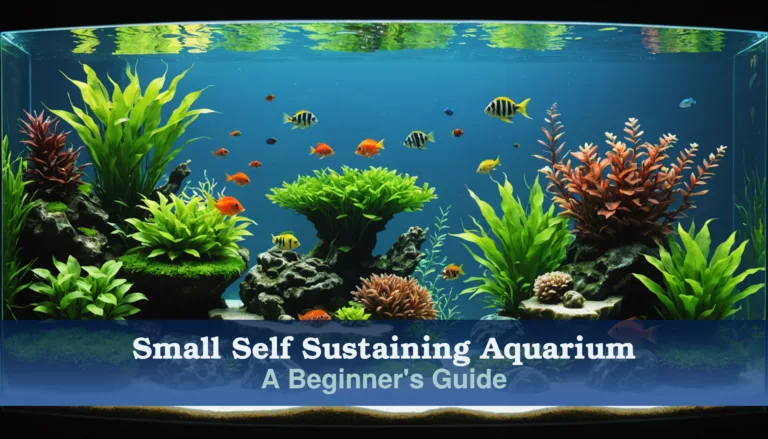African dwarf frogs are tricky eaters. Many aquarium owners struggle to feed these tiny amphibians right. But don’t worry – with the right aquatic frog diet, you can keep your frogs healthy and happy. This guide will show you exactly what to feed your African dwarf frogs and how to do it.
I’ve kept aquariums for over 10 years. I’ve learned the ins and outs of caring for these unique pets. From bloodworms to brine shrimp, I’ll share the best foods for your frogs. You’ll also learn how to set up the perfect feeding spot in your tank.
Ready to become an expert on African dwarf frog care?
Key Takeaways
- African dwarf frogs need a mix of live and frozen foods like bloodworms, brine shrimp, and black worms.
- Feed adult frogs every other day, offering only what they can eat in 5 minutes.
- Keep tank water between 72°F to 78°F with a pH of 6.5 to 7.8 for healthy frogs.
- Use a feeding dish and remove uneaten food after 10 to 15 minutes to keep the tank clean.
- Watch for signs of poor health like bloating, red skin, or not eating, and see a vet if needed.
Understanding the Aquatic Frog Diet: African Dwarf Frog Nutrition
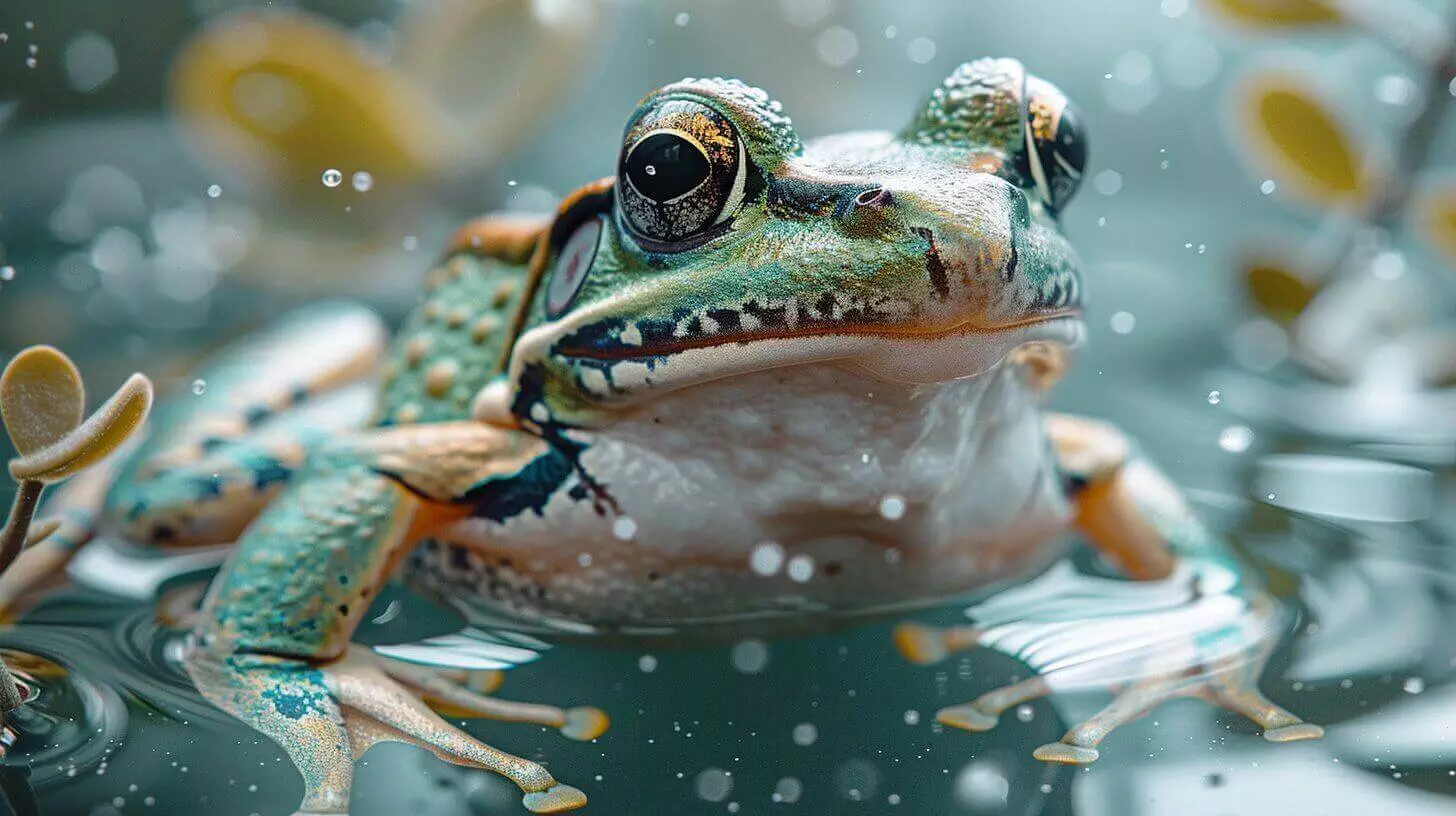
African dwarf frogs need a balanced diet to thrive in your tank. These tiny swimmers love a mix of live and freeze-dried foods that mimic their natural menu.
Natural Diet of African Dwarf Frogs in Their Habitat
African dwarf frogs love to eat small critters in the wild. They munch on insect larvae, tiny fish, and bits of plants. These little frogs act as bottom feeders in rivers and ponds.
They search for food in shallow waters of the Congo basin, Nigeria, and Cameroon. Their diet helps keep their habitats clean and balanced. 1
You’ll see these frogs snap up bloodworms, mosquito larvae, and small shrimp. They also nibble on algae and soft plant matter. In your tank, you can mimic this diet with live or frozen foods.
Essential Nutrients for Healthy African Dwarf Frog Care
African dwarf frogs need a balanced diet for good health. High-protein foods like frozen bloodworms and live black worms are top choices. These foods stay intact longer in water, which is perfect for slow-eating frogs. Feeding your frogs quality food keeps them healthy and your tank cleaner. 2
Proper nutrition is key to frog care. Avoid food pellets as they break down too fast. Instead, offer a mix of live and frozen foods rich in protein. This varied diet mimics what frogs eat in nature. Next, let’s look at how to feed your aquatic pets correctly.
A well-fed frog is a happy frog. Choose foods that float and last in water for the best results.
Balancing Live and Freeze-Dried Food in Your Frog’s Diet
After ensuring your frogs get essential nutrients, it’s time to balance their diet. Mix live and freeze-dried foods for optimal health. Frozen bloodworms and live black worms top the list of best food options. 2
Vary the menu with earthworms, crickets, and roach nymphs. These live foods mimic their natural diet, promoting active feeding behaviors. Limit freeze-dried bloodworms to occasional treats. They can cause constipation if given too often. A diverse diet keeps your frogs happy and thriving in their aquatic home.
Feeding Your African Dwarf Frog: Best Practices and Tips
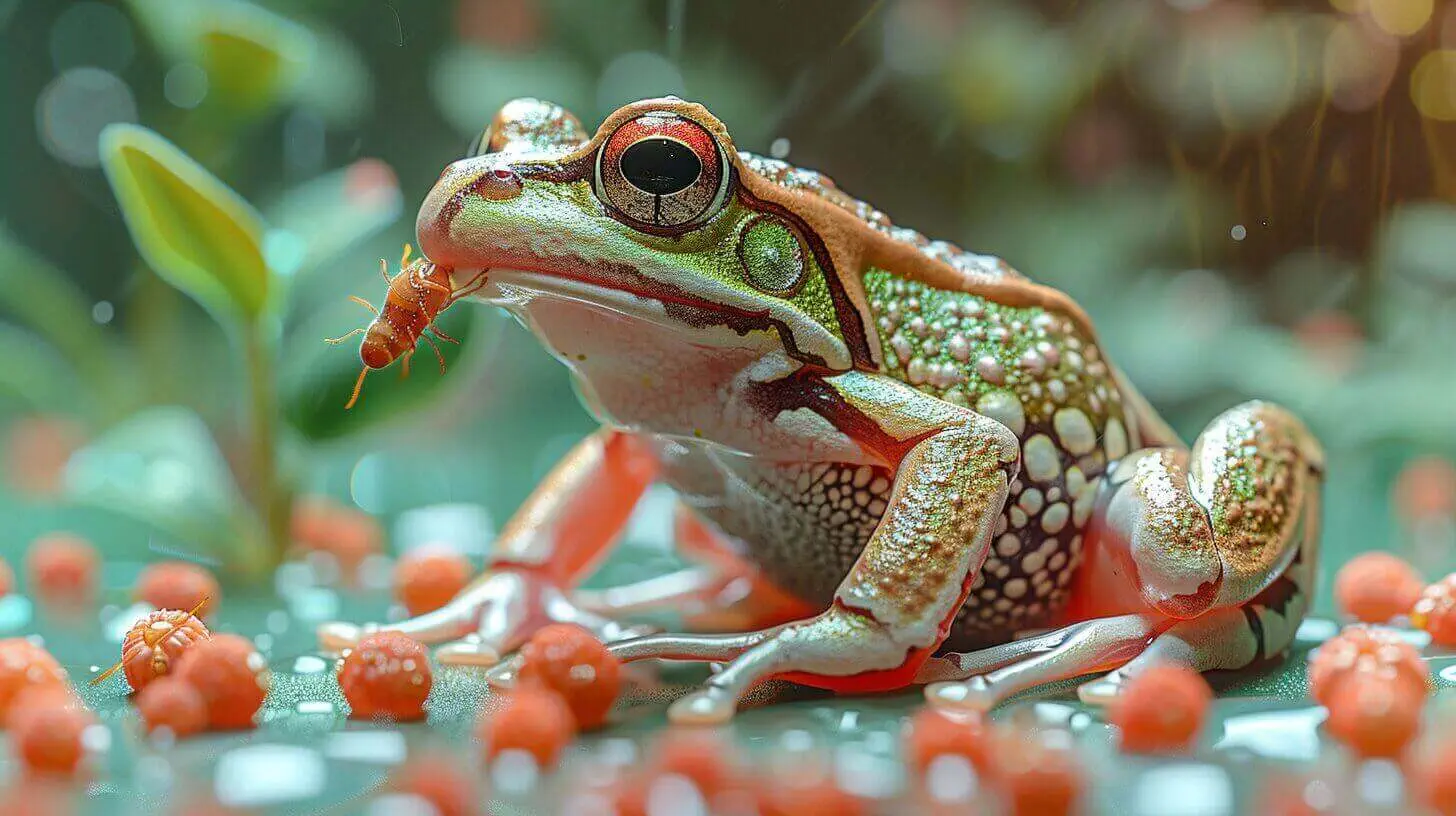
Feeding your African dwarf frog is key to its health. You’ll need to know the right foods and methods to keep your pet happy.
How to Feed African Dwarf Frogs in an Aquarium Setting
Feeding African dwarf frogs in an aquarium requires patience and care. These small amphibians need specific foods and feeding methods to thrive.
- Use frozen bloodworms or live blackworms as main food sources. These worms are easy for frogs to grab and eat. 2
- Spot-feed frogs with a turkey baster or tweezers. This ensures they get enough food, especially if fish are in the tank. 2
- Drop food near the frogs to stimulate their feeding behavior. Frogs use a jerking motion to grasp their food.
- Feed adult frogs every other day, offering only what they can eat in 5 minutes. This prevents overfeeding and excess waste.
- Remove uneaten food after 10 to 15 minutes to keep the tank clean. Leftover food can dirty the water quickly.
- Avoid pellets as they dissolve fast and create waste. Stick to worms for a cleaner tank and healthier frogs.
- Feed at night when frogs are most active. This matches their natural feeding patterns.
- Use a ceramic food dish to contain the food. This helps frogs find their meal easily.
- Vary the diet with brine shrimp or mysis shrimp for added nutrition. This gives frogs a balanced diet.
- Watch for signs of hunger like increased activity or begging at the surface. Adjust feeding amounts as needed.
Proper feeding leads to happy, healthy frogs. Next, let’s look at the best feeding schedule for your aquatic pets.
Recommended Feeding Schedule for Pet African Dwarf Frogs
African Dwarf Frogs need a regular feeding schedule for good health. Here’s a simple plan to keep your frogs well-fed:
- Feed your frogs once a day, letting them eat for about 5 minutes.
- Offer food 2 to 3 times a week to avoid overfeeding.
- Give small treats like tuna or salmon once a week.
- Watch how much they eat and adjust as needed.
A good diet keeps frogs healthy and active in your tank.
Avoiding Overfeeding: Tips for Proper Portion Control
Overfeeding African dwarf frogs can lead to health issues and dirty tanks. Here are tips to avoid overfeeding and control portions:
- Feed small amounts twice a day 2
- Offer only what frogs can eat in 1 to 2 minutes if fed twice a day
- Remove uneaten food after 10 to 15 minutes
- Use a feeding dish to contain food
- Measure portions with a small spoon
- Adjust food based on frog size and activity
- Skip one day of feeding per week
- Watch for signs of bloating or obesity
- Rotate food types to meet nutritional needs
- Break up larger food items into smaller pieces
- Space out feedings to allow for digestion
Optimal Food Choices for African Dwarf Frog Care

African dwarf frogs thrive on a mix of live and frozen foods… Want to know the best options for your aquatic pet?
Live Food Options: Bloodworms and Other Favorites
Bloodworms top the list of live foods for African Dwarf Frogs. These tiny red worms wiggle and entice frogs to eat. You can buy them frozen or live. Frozen ones stay fresh longer and don’t make a mess.
Live ones move more, which frogs love. Other good choices are earthworms and crickets. These foods give frogs the protein they need. Black worms are great too. They hide in gravel, making frogs hunt for them. This mimics natural behavior and keeps frogs active.
Mix up your frog’s diet for best health. Offer different live foods each week. Frozen brine shrimp and mysis shrimp work well too. They’re easy to store and full of nutrients. Dried bloodworms make a nice treat, but don’t use them as the main food.
Live foods keep your tank cleaner than dry ones. They don’t break down as fast in water. This means less waste and happier frogs.
Freeze-Dried and Frozen Food Alternatives for Convenience
Frozen bloodworms are a top choice for African dwarf frogs. They stay intact longer in water, making them easy for slow-eating frogs to find. You can buy these in cube form, perfect for quick feeding.
Just thaw a cube and drop it in. Frozen mysis shrimp is another great option. It’s packed with nutrients and mimics the frogs’ natural diet. 2
For busy days, freeze-dried foods offer a quick fix. But use them sparingly. They can cause tummy troubles if given too often. A mix of frozen and live foods is best for your frogs’ health.
Stick to a varied diet with mostly frozen options. This keeps your frogs happy and well-fed without much fuss.
Commercial Frog Food: Pros and Cons for Aquatic Amphibians
Commercial frog food offers easy feeding for African dwarf frogs. It’s quick to use and often cheaper than live foods. Some brands make pellets just for these frogs. But not all commercial foods have the right nutrients. They may lack what frogs need to stay healthy. Thawed frozen foods are better for your frogs’ diet.
Live foods mimic what frogs eat in nature. Bloodworms and brine shrimp are good choices. These foods give frogs the nutrients they need. Feeding live or frozen foods takes more work than using pellets. You’ll need to thaw frozen foods before each meal.
Next, let’s look at how to set up the perfect home for your frogs to eat in.
Creating the Ideal Habitat for African Dwarf Frog Feeding
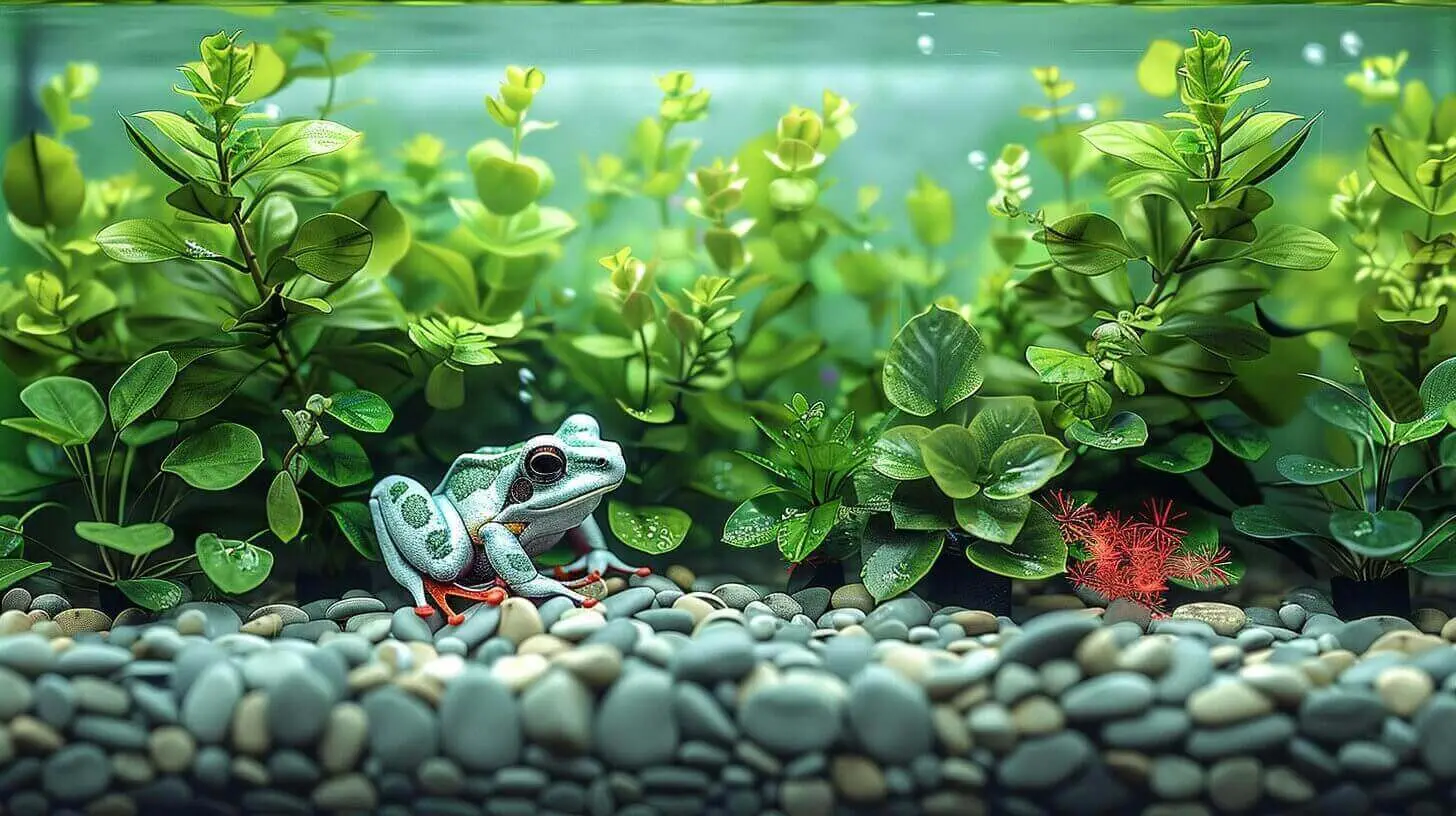
A good habitat helps your frogs eat well. Your tank setup can make feeding time easier for your pets.
Tank Setup to Facilitate Natural Feeding Behaviors
Set up your African dwarf frog tank to mimic their natural habitat. Use sand as the substrate – it’s perfect for these little guys to sift through for food. Add plants and hiding spots to create a comfy home.
Keep the water between 72°F to 78°F and maintain a pH of 6.5 to 7.8. Your frogs will thrive in a long, shallow tank. Aim for 10 to 20 gallons with plenty of swimming space. This setup lets your frogs search for food just like they would in the wild. 1
Make sure your tank has good filtration to keep the water clean. African dwarf frogs are messy eaters, so regular water changes are a must. Use a gravel vacuum to remove leftover food and waste. Your frogs will happily hunt for their meals in this well-designed habitat. 2
Importance of Water Quality in Frog Nutrition
A well-set tank leads to good water quality. This is key for your frog’s health and diet. Clean water helps frogs absorb nutrients from their food better. It also keeps them active and eager to eat.
Poor water can make frogs sick and less likely to eat. Test your tank water often with a freshwater aquarium test kit. Keep the pH between 6.5 and 7.8. Change 10% to 20% of the water each week.
This removes waste and keeps the water fresh. Good water means happy, healthy frogs that eat well and grow strong.
Cohabitation: Feeding Frogs in a Community Aquarium
Feeding African Dwarf Frogs in a community tank needs care. These frogs are slow eaters, so faster fish might steal their food. You’ll need to target-feed your frogs with a turkey baster or tweezers.
Drop food near them at night when they’re active. Use sinking pellets or frozen bloodworms that stay put. 1 Keep an eye on your frogs to make sure they’re getting enough to eat. If not, you may need to separate them at feeding time or move them to their own tank.
Troubleshooting Common African Dwarf Frog Feeding Issues
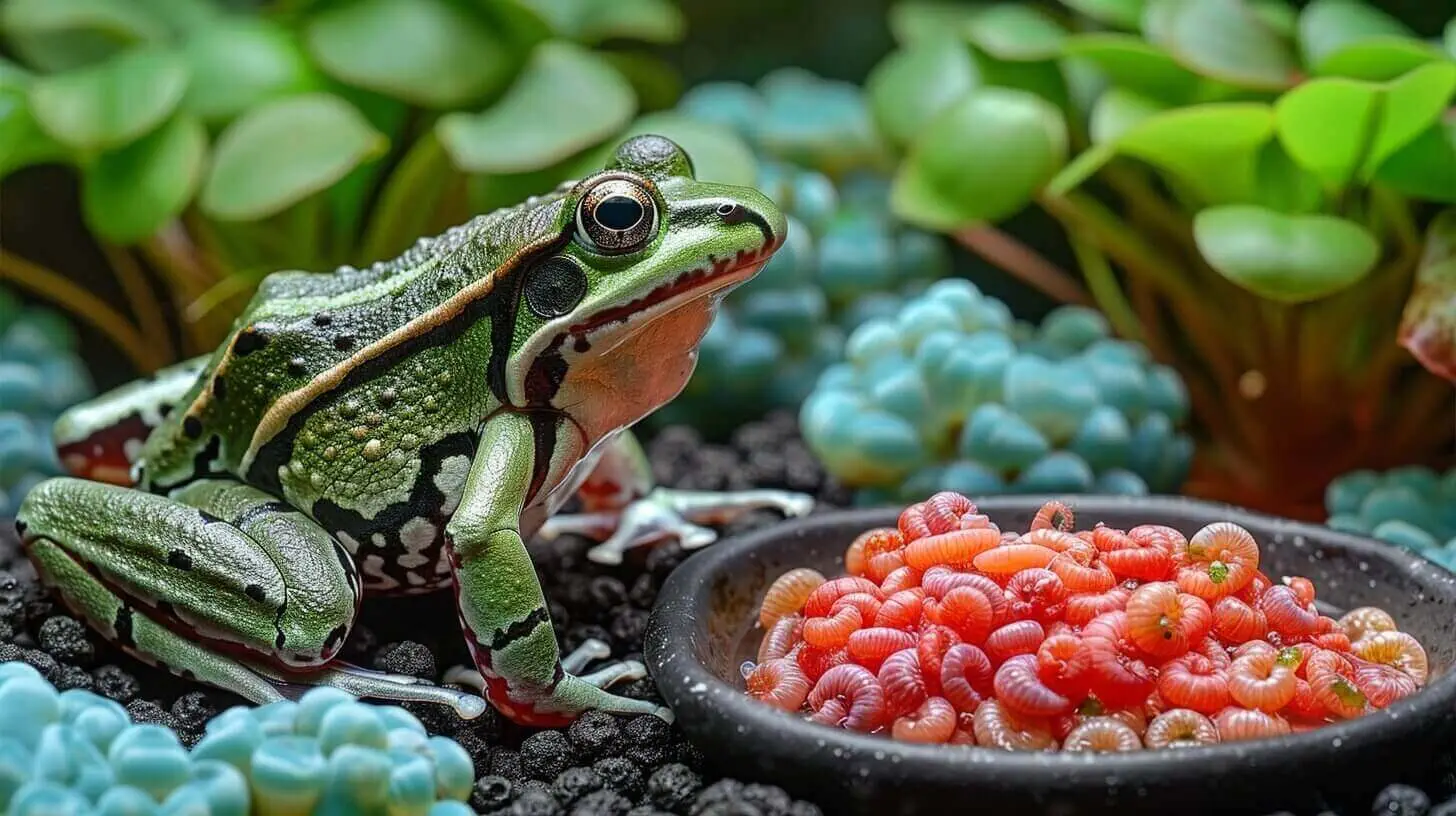
Feeding issues can pop up with African dwarf frogs. You might see signs of poor nutrition or face challenges at mealtime.
Signs of Nutritional Deficiencies in Aquatic Frogs
African dwarf frogs need a balanced diet for good health. Watch for these signs of nutritional problems: 3
- Poor appetite: Frogs may refuse food or eat less than usual.
- Surface floating: Unhealthy frogs often stay at the water’s top.
- Awkward movements: Nutrition issues can cause strange swimming or floating.
- Breathing troubles: Frogs may gasp at the surface more often.
- Weight loss: A skinny frog may not be getting enough food.
- Dull skin: Lack of nutrients can make frog skin look less shiny.
- Slow growth: Young frogs should grow steadily – slow growth is a red flag.
- Weak bones: Soft or bent bones point to calcium deficiency.
- Eye problems: Cloudy or swollen eyes can stem from vitamin A lack.
- Lethargy: Frogs with poor diets often move less and hide more.
- Bloating: A swollen belly may show digestive issues from bad food.
- Red skin: Redness under the skin can mean infection from weak immunity.
Addressing Feeding Challenges in Your Frog Tank
African Dwarf Frogs can be picky eaters. Here are some tips to tackle feeding issues in your tank:
- Use a feeding dish: Place a small dish or petri dish in the tank. Put food in it to keep waste down.
- Try different foods: Offer frozen bloodworms or live black worms. Frogs may prefer one over the other.
- Feed at night: African Dwarf Frogs are more active after dark. Drop food in the tank when lights are off.
- Remove uneaten food: Take out leftovers after 10 to 15 minutes to keep the water clean.
- Check water quality: Poor water can make frogs lose their appetite. Test pH and ammonia levels often.
- Adjust tank size: A 10 to 20 gallon tank helps reduce waste build-up. This keeps frogs healthier and hungrier.
- Use a turkey baster: Squirt food near your frog to make sure it sees the meal.
- Offer variety: Mix up the menu with brine shrimp, white worms, or guppy fry for a balanced diet.
- Create hiding spots: Add plants or decor so shy frogs feel safe coming out to eat.
- Watch for bullies: Make sure tank mates aren’t stealing food from your frogs.
If these tips don’t work, a vet visit might be needed to check for health issues. 13
When to Consult a Vet: Health Concerns Related to Diet
Your African dwarf frog’s health often reflects its diet. Watch for these signs that may require a vet visit:
- Bloating: A swollen belly can signal digestive issues or infections. 1
- Red skin: Unusual redness under the skin may indicate stress or disease.
- Open mouth: A partially open mouth might show breathing problems linked to poor nutrition.
- Food refusal: If your frog stops eating for more than a few days, seek help.
- Floating: Frogs that float at the water’s surface may have swim bladder issues.
- Weight loss: Sudden thinness can point to parasites or other health problems.
- Lethargy: Unusually low activity levels may stem from nutritional deficiencies. 4
- Cloudy eyes: This could be a sign of vitamin A deficiency or infection.
- Skin changes: Patches, spots, or peeling skin need quick vet attention.
- Abnormal poop: Changes in color, consistency, or frequency of waste can hint at diet issues.
Conclusion
Caring for African Dwarf Frogs is fun and easy. Feed them a mix of live and frozen foods. Keep their tank clean and spacious. Watch for signs of health issues. With proper care, these cute pets will thrive in your aquarium for years.
FAQs
1. What do African dwarf frogs eat?
These tiny swimmers love bug-type foods. Bloodworms, brine shrimp, and small freshwater shrimps are top picks. Frozen cubes or live options work great. Some frog keepers use dry or gel foods too. Feed your frogs every day, but don’t overdo it. To keep their diet balanced, you can occasionally mix in high-quality fish flakes or pellets designed for carnivorous pets. It’s important to monitor the amount they eat to avoid leftovers polluting the water. For a broader feeding perspective, looking into red clawed crab food tips can offer insights on alternative protein-rich options your tiny swimmers might enjoy.
2. How big should the tank be for African dwarf frogs?
A 5-gallon tank is good for a couple of frogs. More frogs? Go bigger. A 10 to 20 gallon aquarium gives plenty of space. Deep tanks are best – these frogs like to swim up for air.
3. What tank setup do African dwarf frogs need?
Use fine gravel or pebbles on the bottom. Add plants – real or fake work fine. Toss in some decorations like pots or plates for hiding spots. Keep the water between 72°F to 78°F with a heater. A filter helps keep things clean.
4. How often should I clean the frog tank?
Do a partial water change weekly. Use an aquarium vacuum to clean the gravel. Don’t forget to treat new water before adding it. Clean, fresh water keeps frogs happy and healthy.
5. Can African dwarf frogs live with fish?
Yes, they can! These frogs play nice with calm, small fish. Guppies make good tank buddies. Just be sure everyone gets enough food. Some fish might nip at frog eggs, though.
6. How do I feed my African dwarf frogs?
Drop food in at night – that’s when they’re most active. Use a turkey baster to place food near them. They’re not great hunters. Don’t worry if they miss some food – it’s normal. Just clean up leftovers to avoid dirty water.
References
- ^ https://www.petsmart.com/learning-center/reptile-care/african-dwarf-frog-care-guide/A0118.html
- ^ https://www.aquariumcoop.com/blogs/aquarium/caring-african-dwarf-frogs?srsltid=AfmBOop7KH73UwOh6zdZvesr8261fNFjgfjHQsy3j6HXiHpNApIxmjya
- ^ https://pethelpful.com/reptiles-amphibians/Signs-That-Your-African-Dwarf-Frog-is-Dying
- ^ https://aquariumstoredepot.com/blogs/news/african-dwarf-frog


